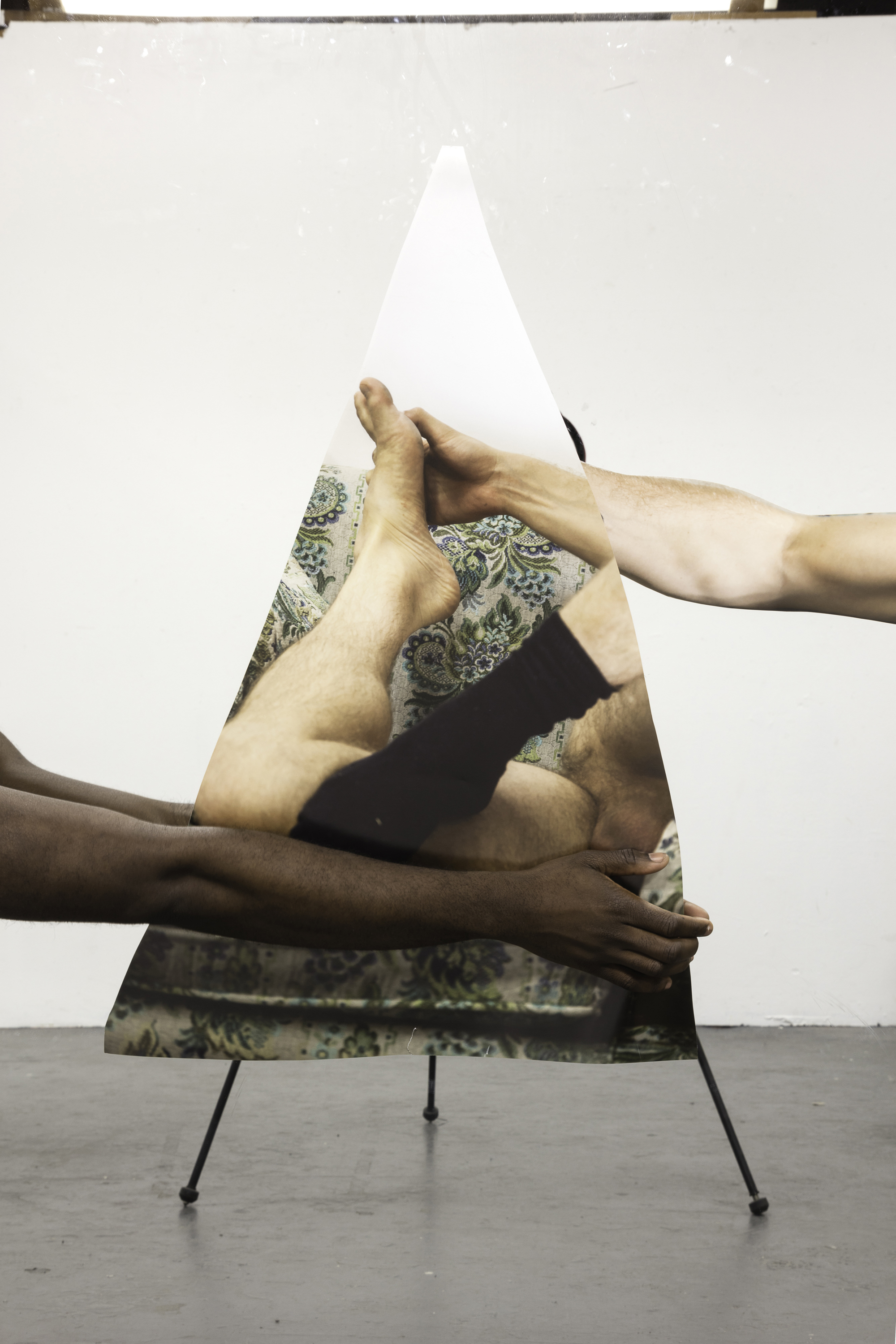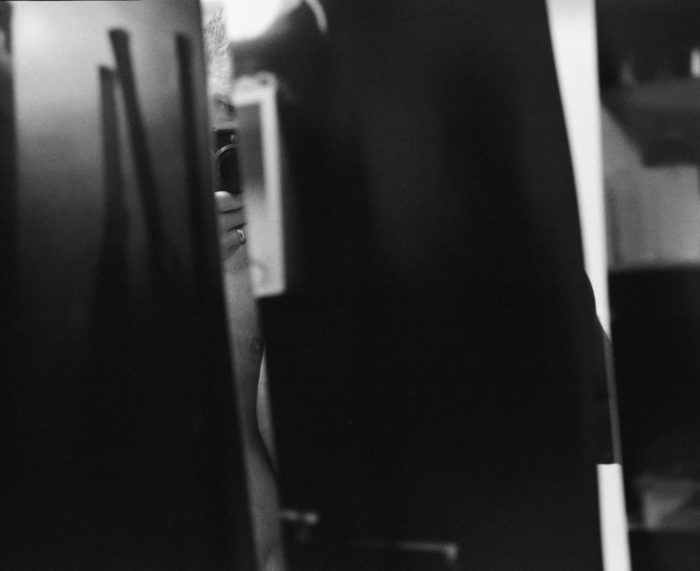
Paul Mpagi Sepuya’s Mirror Study (4R2A0857). 2016. © 2018 Paul Mpagi Sepuya
Paul Mpagi Sepuya’s photographs seem to simultaneously compress and expand space. Focused primarily on portraiture, the Los Angeles-based artist’s practice pushes back against the anonymity of the screen–by creating images that feel oddly human despite their mechanical means. His unique sense of touch is palpable in his photographs, which are on view as part of “Being,” MoMA New Photography show. Before the exhibition opens, we checked in with Sepuya to talk about his heroes, the future of photography and what a portrait takes.
What initially attracted you to photography? Who were your heroes and did they change? My initial attraction to photography began in adolescence with it’s immediacy for gratification and ability to be copied, shared, and re-worked. As a teen in the 90s I was drawn to pop and “alternative” magazines, and early online image-sharing boards. They were spaces where art, fashion, pornography, and popular culture all mixed whether at LA magazine stands or in CompuServe and Geocities web platforms. I was looking for anything gay. My heroes were David LaChappelle, Pierre et Gilles, Andy Warhol. That was my introduction to art. Over the last few years I have realized how much those worlds continue to influence my concerns in photography. I went to university, worked, then went to grad school, and of course my “heroes” may have changed and expanded and become more critical along the way but I find value in staying honest to my initial drives that led me to photography.
In a world saturated with images, how do you keep your passion for photography alive? There is no question about keeping my passion for art alive. The only question is of growth and sustainability as a career. Photographs are easy. Being a working artist is the hard part. I know what concerns me, and in that way I can let a lot pass.
You photograph yourself and your lovers and your peers, what is it like putting these private experiences into the public sphere? In your opinion, does it change the images when they move from one context to another? One thing I realized within the first few years of my portrait projects, by around 2007, was that the production of portraiture is always a public platform. Once or twice when younger I made work about particular relationships. The first time, the subject was very upset as it happened. That I had transformed every private moment into an artwork – which I admit was a bad work! The series itself was a way of processing a relationship and there was no distance from my experience and my making. The last time I attempted such a work was in 2009 and it was a much better series but I am still very guarded about its having entered the public.
My current work is not about individual moments or experiences. Situations are constructed for the camera. They depend and play on pre-existing relationship dynamics but a situation is not an experience and so details our friendships and relationships continue to be opaque to the viewer. A viewer may be able to say that I and so-and-so interacted for a portrait or other picture, but no picture is illustrative of an experience so it bypasses the idea of viewing a private moment. One of my recent bodies of work is called “Dark Room,” and I am playing with the language and relationships created in those spaces. The photographer’s darkroom and the dark room of the queer sex space. Public and private are just about the boundaries of mutual recognition. It’s a double register.

Sepuya’s Exposure (0103), 2017. Courtesy of the artist, Yancey Richardson Gallery, New York, and Document, Chicago.
Your images deal with intimacy and time yet we are always made aware of the camera either through mirrors or layering or its appearance. What is the purpose of this distance? For that same reason I mentioned as my draw to photography “pre-art” : it’s immediacy. A problem with photography as it relates to desire is that it offers up the illusion of a short-cut toward mastering the desired object or subject represented. I’m not just talking about sexual desire. But the actions and apparatus are mediated by so many surfaces and obstructions. I am also thinking a lot about what the proper spectatorial distance is from desire, how touch is forbidden in viewing artwork, and photography’s obsession with the indexical. The glass and mirrors allow me to photograph, through the contrasting relief of the black and brown velvets, the black of the camera, and the brown-black of my skin the latent touch that accumulates on those surfaces. What looks like haze or softening of the lens is in fact what’s left of touch.
How does it feel to have your images contextualized among your peers but also within the larger MoMA collection? It’s an absolute honor! The conversations with Lucy as she has worked on shaping the exhibition have been especially productive because, to be honest, I hadn’t even considered looking at my project in the context of the Museum’s history as a record of art photography. She encouraged me to look at the archives and history of MoMA’s collection alongside the interest and research that I was already doing about the queer history of photography. I really do believe that every instance of photography, ever constructed image or snapshot, is in conversation with every other image across time and place, biography and geography. The way in which photography reproduces itself I think is more akin to a queer idea of reproduction than genetic inheritance. It’s associative by practice.










 in your life?
in your life?

